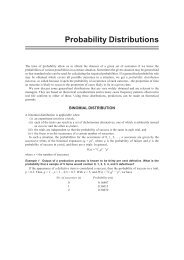International-Business-Dr-R-Chandran-E-book
International-Business-Dr-R-Chandran-E-book
International-Business-Dr-R-Chandran-E-book
You also want an ePaper? Increase the reach of your titles
YUMPU automatically turns print PDFs into web optimized ePapers that Google loves.
123<br />
<strong>International</strong> <strong>Business</strong>- <strong>Dr</strong>. R. <strong>Chandran</strong><br />
domestically and internationally. Firms in this category spend large amounts<br />
of money on R&D and have a high ratio of technical to factory personnel.<br />
Their products are typically designed to fill a need perceived locally that<br />
often exists abroad as well. In the field of chemical and pharmaceuticals<br />
Hopkins and E. Merck adopt the same strategy.<br />
B. The Mature Multinationals<br />
The principal approach in such firms is the presence of economies of scale.<br />
It exists whenever there is an increase in the scale of production, marketing<br />
and distribution costs could be increased in order to retain in existing<br />
position or more aggressive. The existence of economies of scale means<br />
there are inherent cost advantages of being large. The more significant these<br />
economies of scale are, the greater will be the cost disadvantage faced by a<br />
new entrant in the same field in a given market. Philip Morris, Toshiba and<br />
Whirlpool are falling under this category.<br />
Reduction in promotion costs<br />
Some companies such as Coca Cola and Proctor & Gamble take<br />
advantage of the fact that potential entrants are wary of the high costs<br />
involved in advertising and marketing a new product. Such firms are able<br />
to exploit the premium associated with their strong brand names. MNCs<br />
can use single campaign and visual aspects in all the countries<br />
simultaneously with different languages like Nestlé’s Nescafe.<br />
Cost advantage through multiple activities<br />
Other firms take advantage of economies of scope. Economies of scope<br />
exist whenever the same investment can support multi-profitable<br />
activities, which are less expensive. Examples abound of the cost<br />
advantages of producing and selling multiple products related to common<br />
technology, production facilities and distribution network. For example,<br />
Honda has increased its investment in small engine technology in the<br />
automobile, motorcycle, lawn mower, marine engine, chain saw and<br />
generator business. Mitsubishi enjoys this advantage of steel trading, lifts<br />
and escalators, vehicles and power generation.<br />
C. The Senescent Multinationals<br />
Only for Private Circulation





